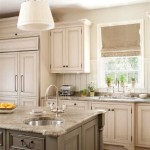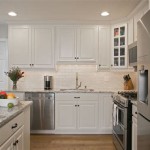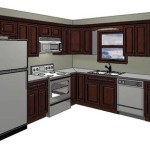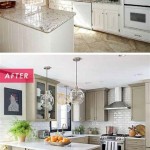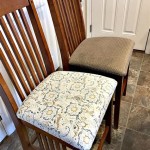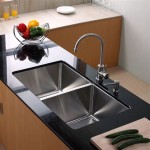```html
Kitchen and Living Room Floor Ideas: A Comprehensive Guide
Selecting the appropriate flooring for the kitchen and living room requires careful consideration of several factors, including aesthetics, durability, budget, and maintenance requirements. These spaces often serve as high-traffic areas, necessitating flooring options that can withstand daily wear and tear while complementing the overall design of the home. This article explores a range of flooring materials suitable for kitchens and living rooms, offering insights into their respective advantages and disadvantages.
Hardwood Flooring: A Timeless Choice
Hardwood flooring provides a classic and elegant look that can enhance the aesthetic appeal of both kitchens and living rooms. Its natural beauty and warmth contribute to a comfortable and inviting atmosphere. Hardwood is available in a variety of species, each with unique grain patterns, colors, and hardness levels. Popular options include oak, maple, cherry, and walnut. The hardness of wood is typically measured using the Janka hardness scale; a higher Janka rating indicates greater resistance to dents and scratches.
In the living room, hardwood flooring can create a sophisticated and refined ambiance. It pairs well with a wide range of furniture styles and color schemes. However, in the kitchen, hardwood requires extra care and maintenance due to potential exposure to water, spills, and humidity. Installing a durable finish, such as polyurethane, can help protect the wood from moisture damage. Additionally, placing area rugs in high-traffic areas, such as in front of the sink and stove, can help prevent wear and tear.
Engineered hardwood is an alternative to solid hardwood that offers improved stability and resistance to moisture. It consists of a thin layer of hardwood veneer bonded to a core of plywood or high-density fiberboard (HDF). This construction makes engineered hardwood less susceptible to warping and expanding in response to changes in humidity, making it a more suitable option for kitchens and basements. However, it is important to note that engineered hardwood typically has a shorter lifespan than solid hardwood, as it can only be sanded and refinished a limited number of times.
The cost of hardwood flooring can vary significantly depending on the species, grade, and installation method. Solid hardwood typically ranges from $8 to $25 per square foot, including installation, while engineered hardwood ranges from $5 to $15 per square foot. Professional installation is generally recommended to ensure proper acclimation and a secure fit.
Tile Flooring: Durability and Versatility
Tile flooring is a highly durable and versatile option that is well-suited for both kitchens and living rooms. It is resistant to water, stains, and scratches, making it ideal for high-traffic areas and spaces prone to spills. Tile is available in a wide range of materials, including ceramic, porcelain, and natural stone, offering diverse design possibilities.
Ceramic tile is a popular and affordable option for kitchen flooring. It is easy to clean and maintain, and it comes in a vast array of colors, patterns, and sizes. Porcelain tile is denser and more durable than ceramic tile, making it a better choice for areas that experience heavy foot traffic. It is also less porous than ceramic tile, making it more resistant to water damage. Natural stone tile, such as granite, marble, and travertine, adds a touch of luxury and sophistication to any space. However, it is more expensive than ceramic and porcelain tile and requires more maintenance.
In the kitchen, tile flooring provides a practical and hygienic surface that can withstand the demands of cooking and food preparation. It is easy to clean up spills and messes, and it is resistant to stains from common kitchen ingredients. In the living room, tile flooring can create a sleek and modern look. Large format tiles can minimize grout lines, creating a seamless and spacious feel. Tile can also be combined with radiant heating systems to provide warmth and comfort underfoot.
The cost of tile flooring can vary depending on the material, size, and design. Ceramic tile typically ranges from $3 to $10 per square foot, including installation, while porcelain tile ranges from $5 to $15 per square foot. Natural stone tile can range from $10 to $50 per square foot or more. Professional installation is recommended to ensure proper leveling and grout application.
Luxury Vinyl Flooring: A Cost-Effective and Low-Maintenance Alternative
Luxury vinyl flooring (LVF) is a popular choice for homeowners seeking a cost-effective and low-maintenance flooring solution for both kitchens and living rooms. LVF is designed to mimic the look and feel of natural materials, such as hardwood, tile, and stone, while offering enhanced durability and water resistance. It is available in two main formats: planks and tiles.
Luxury vinyl planks (LVP) replicate the appearance of hardwood flooring, with realistic wood grain patterns and textures. Luxury vinyl tiles (LVT) mimic the look of ceramic, porcelain, and stone tiles, with various colors, sizes, and designs available. Both LVP and LVT are constructed with multiple layers, including a wear layer that protects the flooring from scratches, stains, and fading. The thickness of the wear layer is a key indicator of the flooring's durability; thicker wear layers provide greater protection and longevity.
In the kitchen, LVF offers excellent water resistance, making it a suitable option for areas prone to spills and moisture. It is also easy to clean and maintain, requiring only regular sweeping and mopping. In the living room, LVF can create a warm and inviting atmosphere, mimicking the look of hardwood or tile at a fraction of the cost. It is also softer and more comfortable underfoot than tile, making it a preferred choice for living spaces.
LVF is relatively easy to install, with options including click-lock, glue-down, and loose-lay systems. Click-lock systems are the most popular choice for DIY installations, as they require no adhesive and can be easily assembled. Glue-down systems provide a more permanent and stable installation, while loose-lay systems offer the flexibility to easily remove and replace individual planks or tiles.
The cost of LVF typically ranges from $3 to $10 per square foot, including installation. This makes it a more affordable option than hardwood and tile flooring. LVF is also a low-maintenance option, requiring minimal upkeep and offering excellent durability.
Laminate Flooring: An Affordable and Durable Option
Laminate flooring is a synthetic flooring option that offers an affordable and durable alternative to hardwood and tile. It consists of a high-density fiberboard (HDF) core topped with a photographic layer that mimics the appearance of natural materials, such as wood, stone, and tile. A clear, protective wear layer is applied over the photographic layer to resist scratches, stains, and fading.
Laminate flooring is available in a wide range of styles and colors, making it easy to find a design that complements any decor. It is also relatively easy to install, with click-lock systems that allow for DIY installation. However, laminate flooring is not as water-resistant as luxury vinyl flooring or tile, making it less suitable for kitchens and bathrooms. Prolonged exposure to moisture can cause the HDF core to swell and warp, leading to damage and requiring replacement.
In the living room, laminate flooring can provide a stylish and durable surface that is resistant to scratches and stains. It is also easy to clean and maintain, requiring only regular sweeping and mopping. However, it is important to note that laminate flooring can be slippery when wet, so caution should be exercised in areas prone to spills.
While newer laminate flooring options offer improved water resistance, they are still not completely waterproof. It's crucial to promptly clean up any spills to prevent damage. In kitchens, laminate flooring is generally best suited for areas away from sinks and dishwashers where water exposure is less likely.
The cost of laminate flooring typically ranges from $2 to $8 per square foot, including installation. This makes it one of the most affordable flooring options available. However, it is important to choose a high-quality laminate flooring with a thick wear layer to ensure durability and longevity.
Carpet Flooring: Comfort and Warmth
Carpet flooring offers comfort, warmth, and sound absorption, making it a popular choice for living rooms and bedrooms. It is available in a wide range of styles, colors, and textures, allowing for diverse design possibilities. Carpet is also softer and more comfortable underfoot than hard surface flooring options, making it a preferred choice for relaxation and lounging.
However, carpet is not recommended for kitchens due to its susceptibility to stains, spills, and moisture damage. It is also more difficult to clean and maintain than hard surface flooring options. In the living room, carpet can create a cozy and inviting atmosphere. It can also help to reduce noise levels and improve acoustics. However, it is important to choose a durable and stain-resistant carpet for high-traffic areas.
Carpet is typically made from synthetic fibers, such as nylon, polyester, and olefin, or natural fibers, such as wool. Nylon is the most durable and stain-resistant synthetic fiber, making it a popular choice for high-traffic areas. Polyester is a softer and more affordable synthetic fiber, but it is less durable than nylon. Olefin is a stain-resistant and moisture-resistant synthetic fiber, making it a good choice for basements and other areas prone to moisture. Wool is a natural fiber that is soft, luxurious, and naturally stain-resistant. However, it is more expensive than synthetic fibers and requires more maintenance.
The cost of carpet flooring can vary depending on the fiber, style, and construction. Synthetic carpet typically ranges from $3 to $10 per square foot, including installation, while wool carpet can range from $10 to $50 per square foot or more. Professional installation is recommended to ensure proper stretching and a secure fit.
Regular vacuuming is essential to maintain the appearance and hygiene of carpet flooring. Professional cleaning should be performed periodically to remove deep-seated dirt and stains. It's important to address spills promptly to prevent permanent staining.
```
23 Floor Transition Ideas Sebring Design Build Trends

Kitchen Floor Ideas For Your Home Carpet One

Kitchen Floor Ideas For Your Home Carpet One

10 Inspiring Open Floor Plan Ideas For Kitchen And Living Rooms Flooring Design

17 Open Concept Kitchen Living Room Design Ideas Style Motivation

Unique Kitchen Flooring Options To Make A Statement

How To Decorate An Open Floor Plan 7 Design Tips

Decor Ideas For An Open Floor Plan Living Room And Kitchen

Decor Ideas For Open Floor Plans Next Stage Design
5 Tips On Choosing Flooring For An Open Plan House Designed

